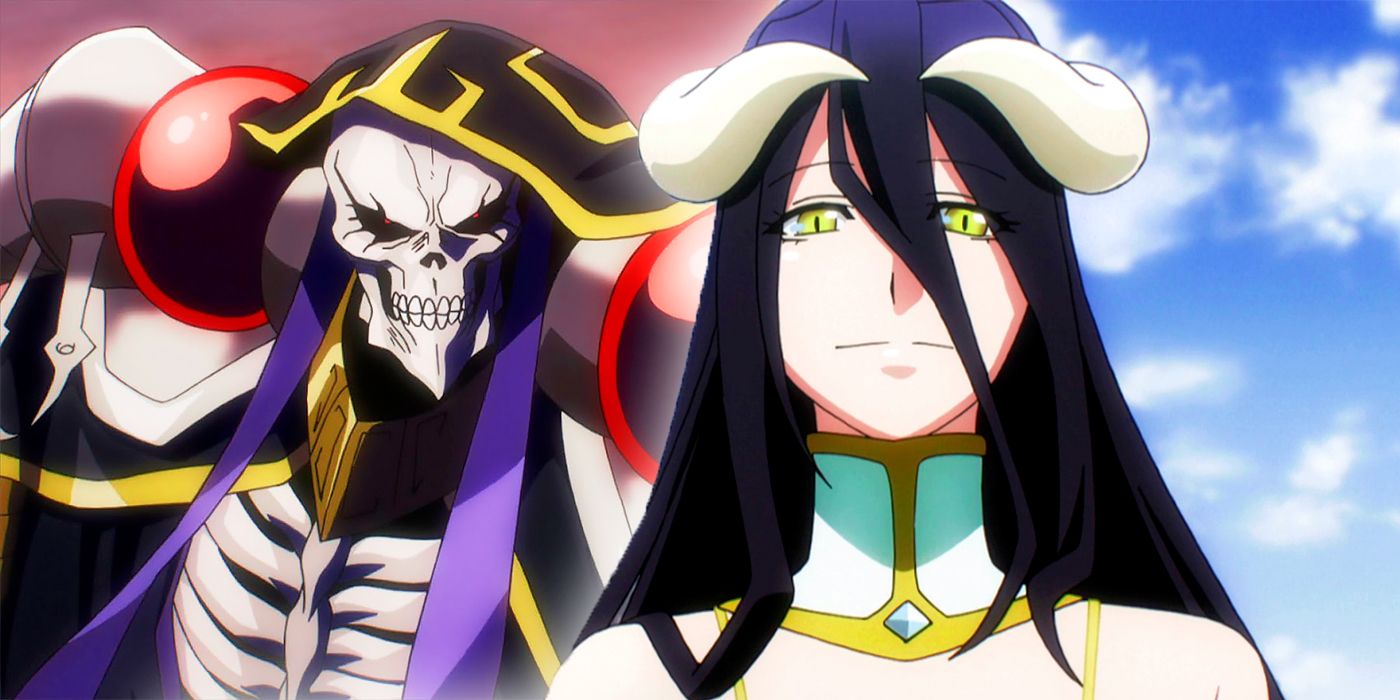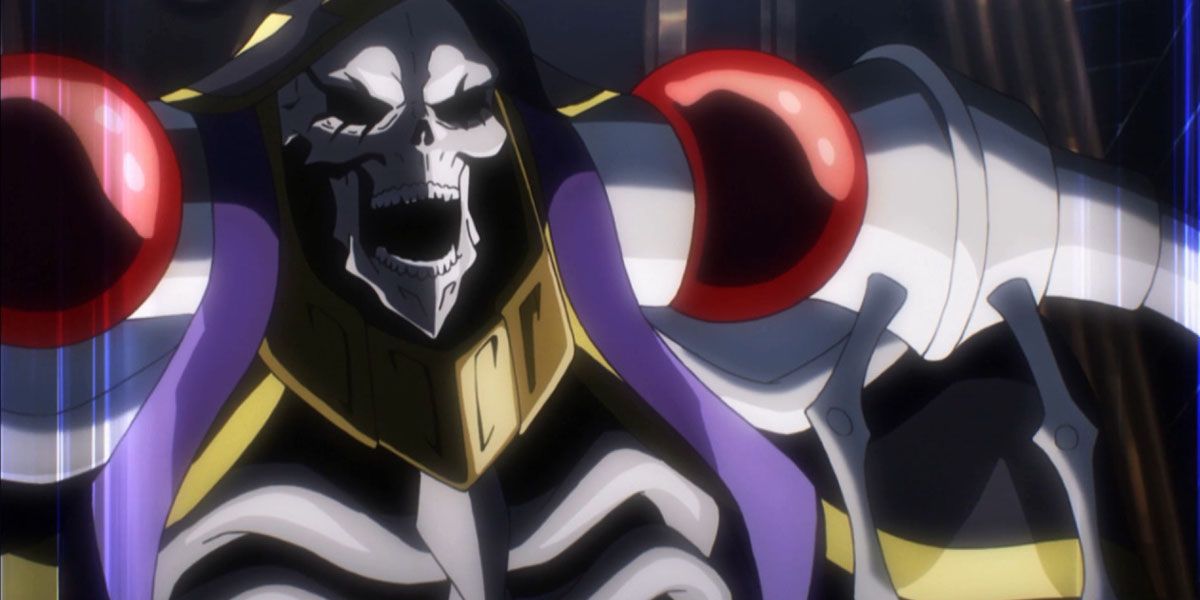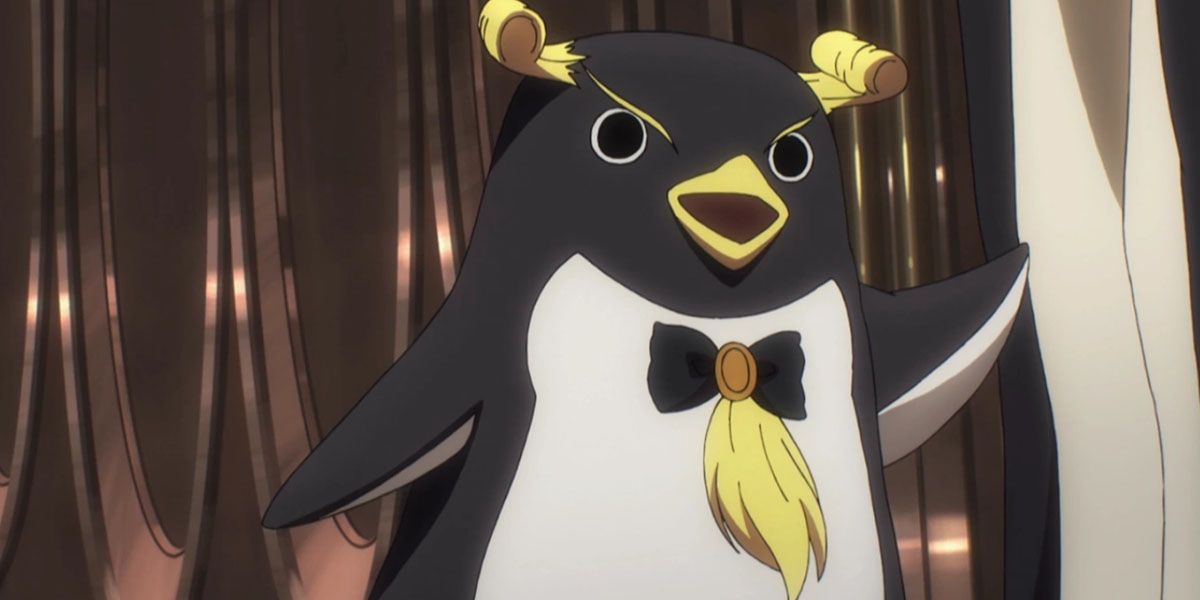Beginning in 2015, the somewhat subversive Overlord anime remains incredibly popular to this day. This can be explained by the mutual popularity of the light novel and manga series, both of which are still being published. The anime, meanwhile, is finally receiving a fourth season, as well as a movie, which will only bolster its fandom even further.
The anime and its source material have all the generic trappings of the isekai genre, but this seems to be more of a plus for audiences than a deterrent. Here's a look at what Overlord does so well that propels it beyond the sum of its parts.
The Story of Overlord
Written by Kugane Maruyama, Overlord began as an online novel series in 2010 before becoming a manga in 2014 and an anime one year later. The story sees a once-popular MMORPG shutting down its servers, much to the chagrin of expert player Momonga. Instead of simply giving up on the game, he chooses to play it to the bitter end, staying logged in as the servers shut down.
But rather than reaching the game's ending, he finds himself trapped inside it -- albeit in the guise of his skeletal avatar. Meanwhile, all of the game's NPCs have been given sentience, turning it into a fully interactive and living world. From there, Momonga pledges to see if anyone else from the real world is there with him. Meanwhile, he's boasting incredibly powerful stats and a lack of moral quandaries, turning him into an overpowered killing machine.
Why Overlord Remains Popular
On paper, Overlord is the quintessential isekai series, making it fairly dime-a-dozen as far as current anime, manga and light novels go. This could actually be one of its biggest selling points, however. Given when the Overlord franchise, namely its anime, became popular, it was likely one of the first isekai that many modern anime fans encountered. With its medieval MMORPG setting, it's perhaps even more of an archetypal isekai than the well-known Sword Art Online.
The main character Momonga being a massive skeleton monster instead of a having a more conventional appearance also spruces things up, setting Overlord apart from the norm of isekai protagonists. The genre now, more than ever before, actually embraces protagonists with weird forms as part of their second lives, with another series even having a skeleton protagonist. Overlord could thus be seen as a precursor to this trend of oddball heroes.
There's also the Overlord anime's incredible world-building. The series' slower pace is afforded by extremely high fidelity to its light novel source material -- and less of a focus on pure action. Even the smallest details of how the world works are explained, ensuring a sense of internal consistency and keeping anything from seeming too random.
The premise of Overlord has an inverted nature, with Momonga being something of an anti-hero/anti-villain. His extreme power makes him terrifying against whoever dares to face him, but it's kept from becoming farcical due to his own personal mission -- as well as questioning what he should do in the new world he's stuck in. This, combined with the slow pace, creates the image of a slow transition from a bewildered ex-gamer to a fearsome god of this world.
This makes Overlord into a sort of extended origin story, or even the reverse of a horror story, albeit one set from the deathless killer's perspective. Given there's still quite a bit of the manga/light novels left to adapt, hopefully, these interesting twists on the isekai genre propel the anime to receive even more seasons down the road.



